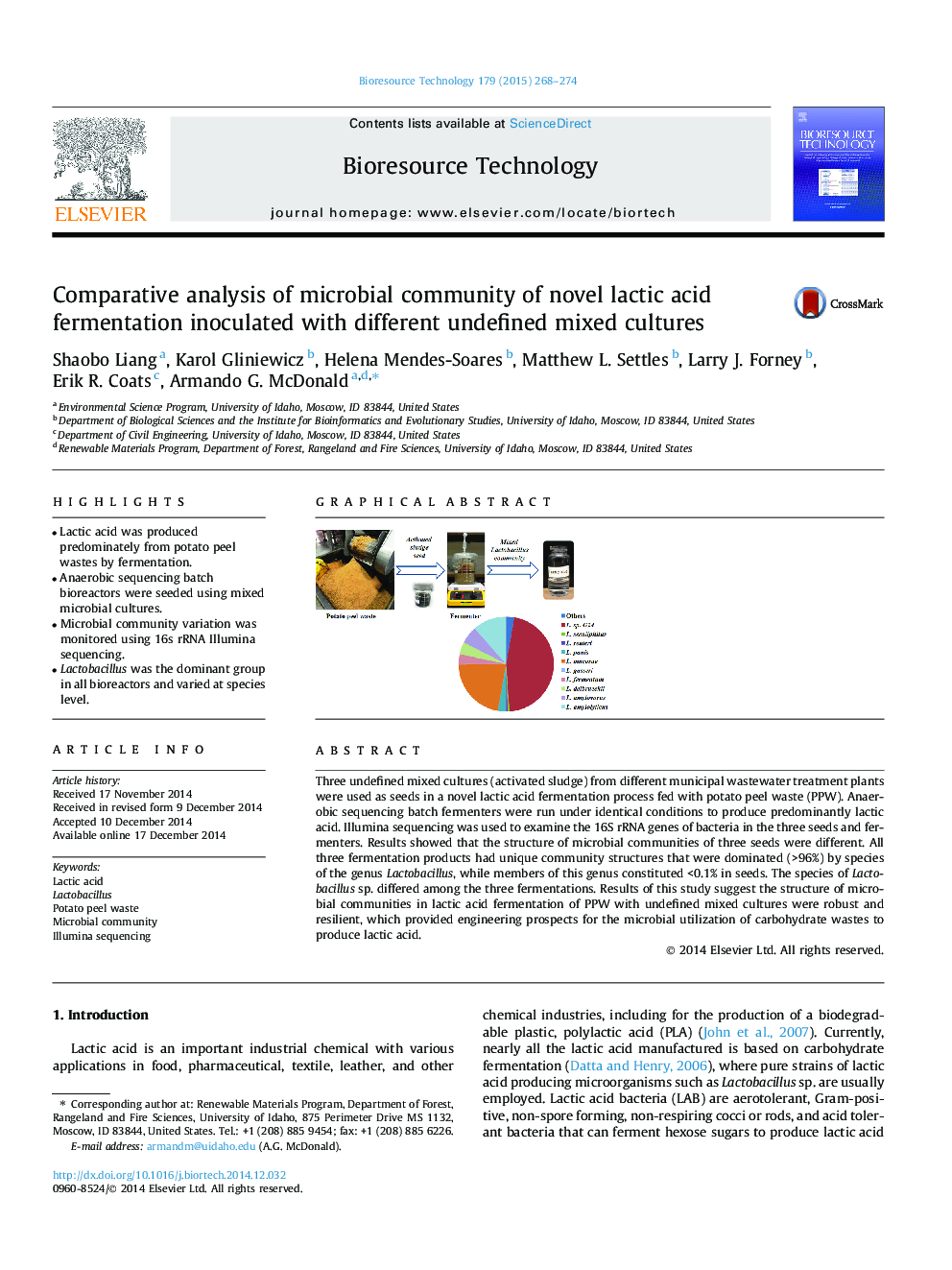| Article ID | Journal | Published Year | Pages | File Type |
|---|---|---|---|---|
| 680174 | Bioresource Technology | 2015 | 7 Pages |
•Lactic acid was produced predominately from potato peel wastes by fermentation.•Anaerobic sequencing batch bioreactors were seeded using mixed microbial cultures.•Microbial community variation was monitored using 16s rRNA Illumina sequencing.•Lactobacillus was the dominant group in all bioreactors and varied at species level.
Three undefined mixed cultures (activated sludge) from different municipal wastewater treatment plants were used as seeds in a novel lactic acid fermentation process fed with potato peel waste (PPW). Anaerobic sequencing batch fermenters were run under identical conditions to produce predominantly lactic acid. Illumina sequencing was used to examine the 16S rRNA genes of bacteria in the three seeds and fermenters. Results showed that the structure of microbial communities of three seeds were different. All three fermentation products had unique community structures that were dominated (>96%) by species of the genus Lactobacillus, while members of this genus constituted <0.1% in seeds. The species of Lactobacillus sp. differed among the three fermentations. Results of this study suggest the structure of microbial communities in lactic acid fermentation of PPW with undefined mixed cultures were robust and resilient, which provided engineering prospects for the microbial utilization of carbohydrate wastes to produce lactic acid.
Graphical abstractFigure optionsDownload full-size imageDownload as PowerPoint slide
